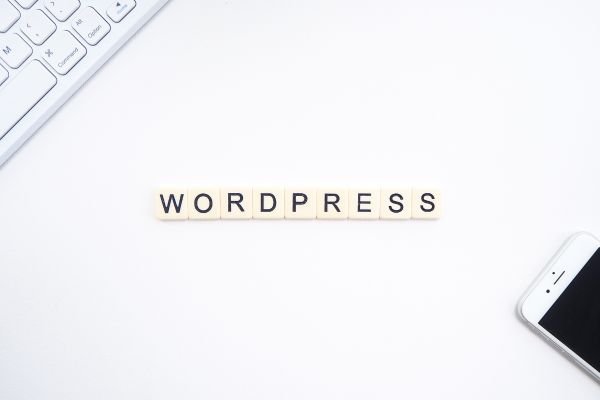WordPress has established itself as one of the most popular and versatile platforms for web design and development. With its user-friendly interface, extensive customization options, and robust community support, WordPress offers a powerful solution for building and managing websites of all kinds. Whether you’re a beginner or a seasoned web designer, understanding the fundamentals of web design with WordPress can help you create professional and functional websites that meet your specific needs.
Why Choose WordPress for Web Design?
WordPress is renowned for its flexibility and ease of use, making it an ideal choice for a wide range of web design projects. Here are some key reasons why WordPress stands out:
1. User-Friendly Interface
WordPress offers an intuitive dashboard that allows users to manage content, customize their site, and install plugins without needing extensive coding knowledge. This user-friendly approach is particularly beneficial for those new to web design.
2. Customizable Themes
With thousands of free and premium themes available, WordPress enables users to easily change the look and feel of their website. Themes can be customized to match branding requirements and personal preferences, offering a wide range of design possibilities.
3. Extensive Plugin Library
WordPress boasts a vast library of plugins that extend the functionality of your site. Whether you need to add contact forms, SEO tools, or e-commerce features, there’s a plugin to meet almost any requirement.
4. SEO-Friendly
WordPress is designed with search engine optimization (SEO) in mind. Features like customizable permalinks, SEO plugins, and easy content management help improve your site’s visibility in search engine results.
5. Strong Community Support
The WordPress community is one of its greatest assets. With numerous forums, blogs, and support groups, users have access to a wealth of resources and expert advice.
Getting Started with WordPress Web Design
Before diving into web design with WordPress, it’s essential to understand the basic steps involved in setting up and customizing your site.
Choosing a Hosting Provider
To use WordPress, you’ll need a reliable web hosting provider. Many hosts offer one-click WordPress installation, making it easy to get started. Look for hosts that provide good performance, security, and customer support.
Installing WordPress
Once you’ve chosen a hosting provider, you can install WordPress. Most hosting services offer an easy installation process via their control panel. Alternatively, you can download WordPress from its official site and install it manually.
Selecting and Installing a Theme
After installing WordPress, you can choose a theme that fits your design goals. Navigate to the “Appearance” section in your WordPress dashboard, where you can browse, preview, and install themes. Many themes come with customization options that allow you to modify colors, fonts, and layouts.
Customizing Your Site
With your theme in place, you can start customizing your site. WordPress offers various tools for adjusting your site’s appearance, including the Customizer, which lets you change site identity, colors, and more. You can also use page builders like Elementor or WPBakery for more advanced design options.
Essential Plugins for WordPress Web Design
Plugins are integral to enhancing the functionality and design of your WordPress site. Here are some must-have plugins for web design:
1. Elementor
Elementor is a popular page builder plugin that allows you to create visually appealing layouts with a drag-and-drop interface. It offers a wide range of widgets, templates, and design options.
2. Yoast SEO
Yoast SEO helps optimize your site for search engines by providing tools for on-page SEO, meta tags, and readability analysis. It’s essential for improving your site’s search engine ranking.
3. WPForms
WPForms is a user-friendly contact form plugin that allows you to create and manage forms with ease. It includes features like form templates, drag-and-drop fields, and spam protection.
4. WooCommerce
For those interested in e-commerce, WooCommerce is a powerful plugin that transforms your WordPress site into a fully functional online store. It offers features for product management, payments, and shipping.
5. Akismet
Akismet helps protect your site from spam comments and contact form submissions. It automatically filters out spam and ensures your site remains clean and professional.
Best Practices for WordPress Web Design
To ensure your WordPress site is effective and user-friendly, consider the following best practices:
1. Focus on Mobile Responsiveness
With the increasing use of mobile devices, it’s crucial to ensure your WordPress site is mobile-friendly. Choose responsive themes and test your site on various devices to ensure it displays correctly.
2. Optimize for Speed
Site speed impacts user experience and search engine rankings. Use caching plugins, optimize images, and choose a high-performance hosting provider to improve load times.
3. Implement Secure Practices
Security is a top priority for any website. Use strong passwords, install security plugins, and keep WordPress, themes, and plugins updated to protect your site from vulnerabilities.
4. Regular Backups
Regular backups are essential to safeguard your site’s content. Use plugins like UpdraftPlus to automate backups and store them securely, ensuring you can recover your site in case of an issue.
5. Monitor and Analyze Performance
Use tools like Google Analytics to track your site’s performance and user behavior. Analyzing this data helps you make informed decisions about design improvements and content strategy.
Conclusion
Web design with WordPress offers a versatile and powerful platform for creating professional websites. From its user-friendly interface and extensive theme options to its robust plugin library and SEO features, WordPress provides all the tools needed to build and manage a successful site.
By understanding the basics of WordPress, leveraging essential plugins, and following best practices, you can create a website that meets your design goals and delivers an exceptional user experience. Whether you’re building a personal blog, a business site, or an e-commerce store, WordPress remains a top choice for web designers and developers around the world.


